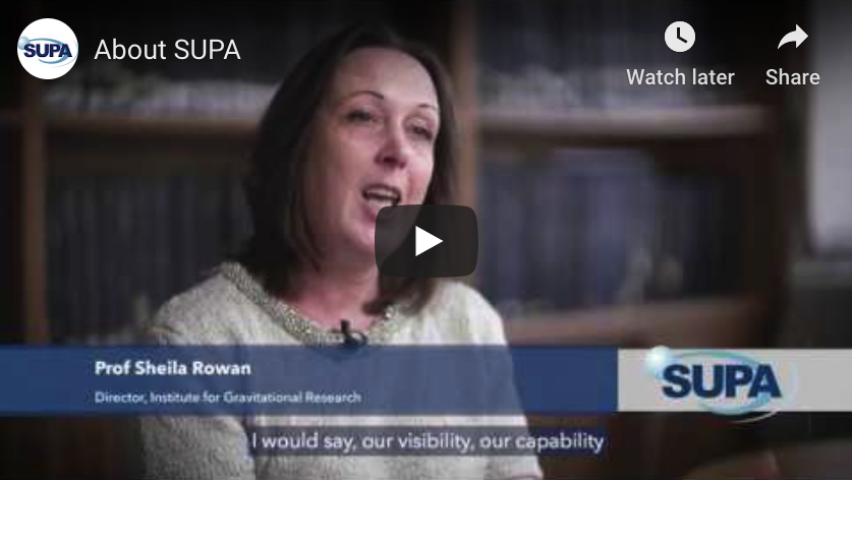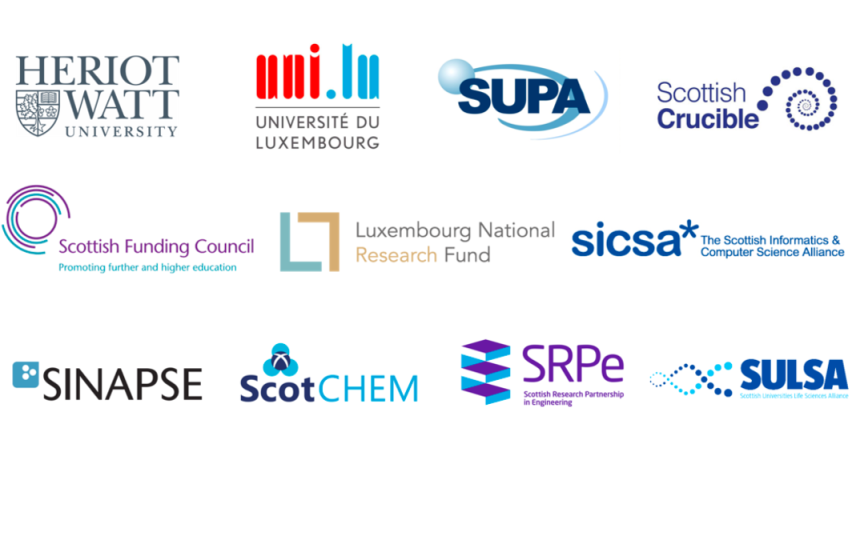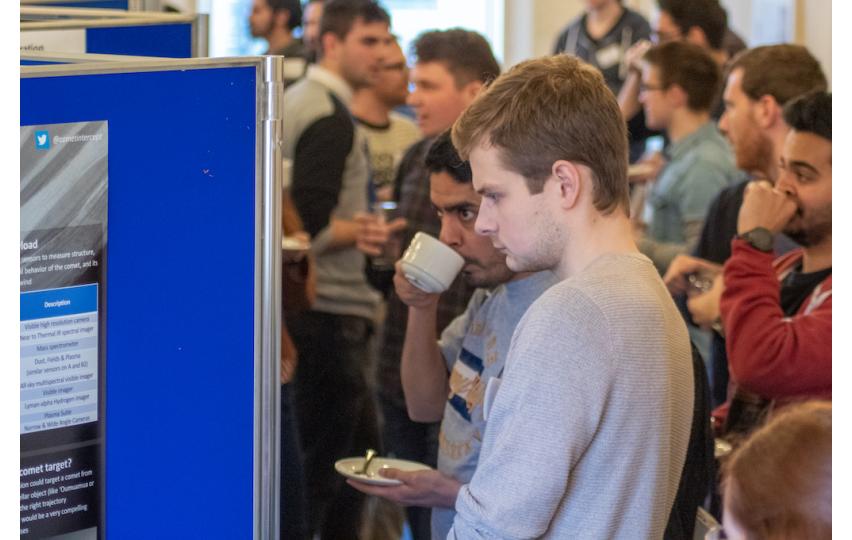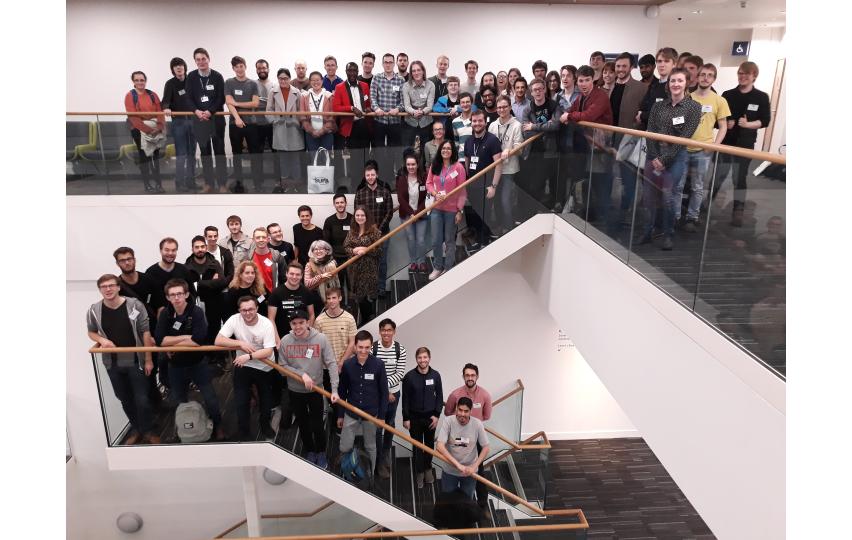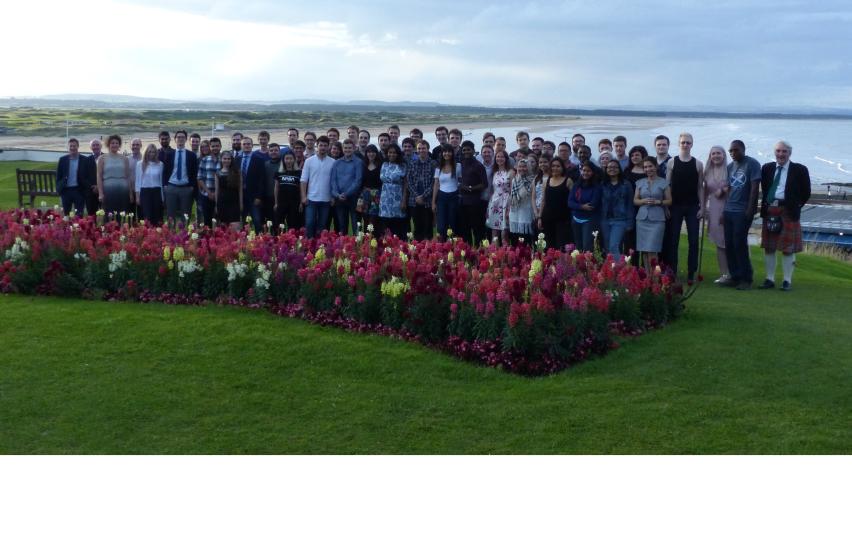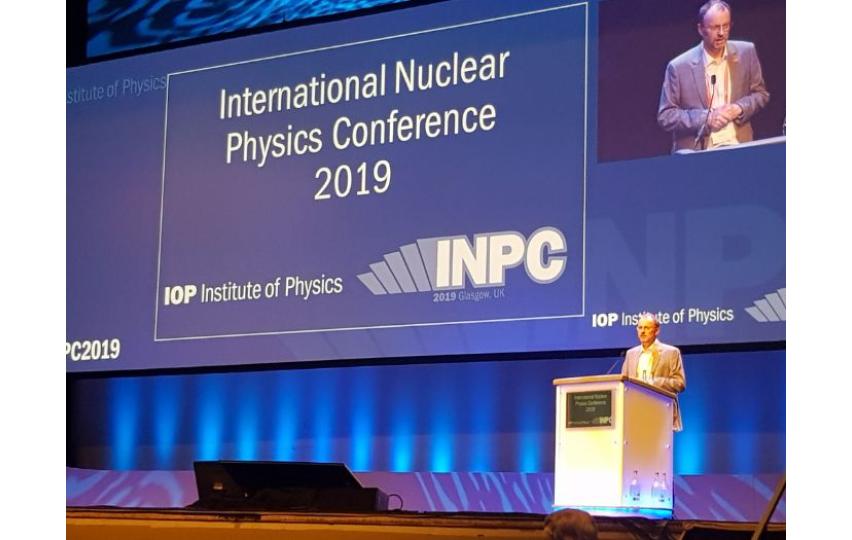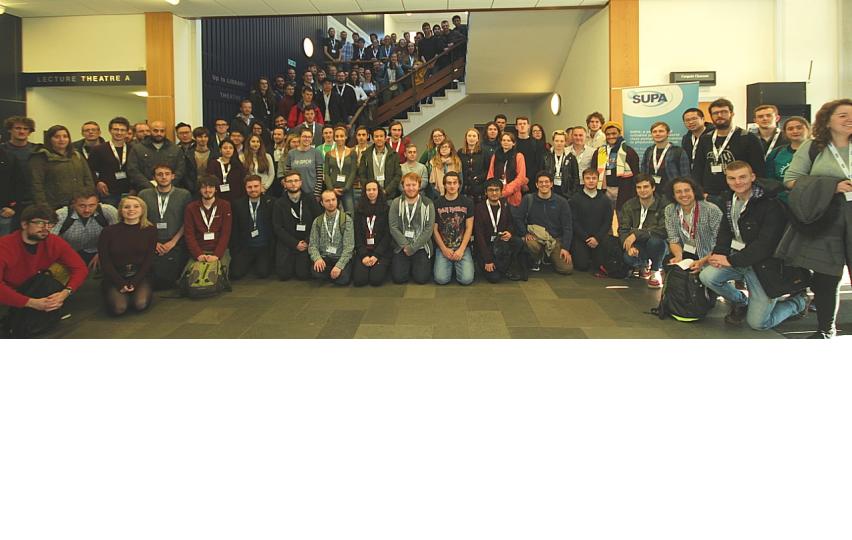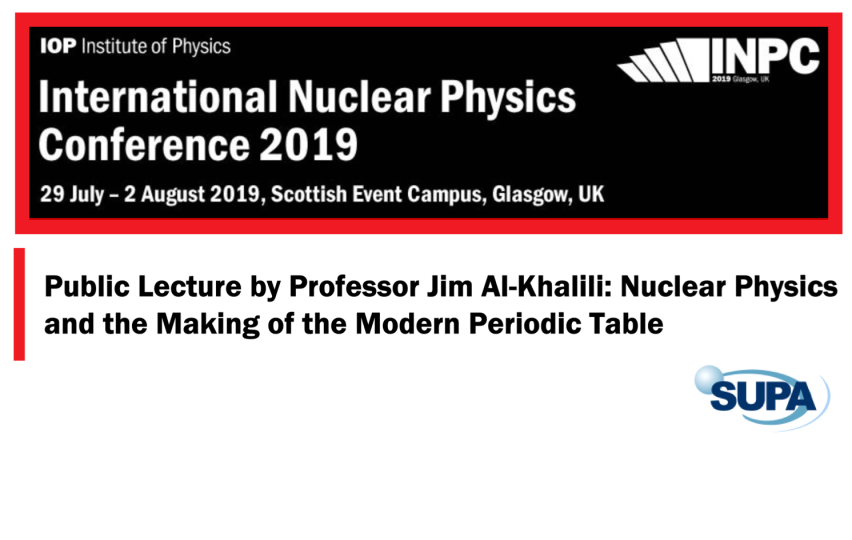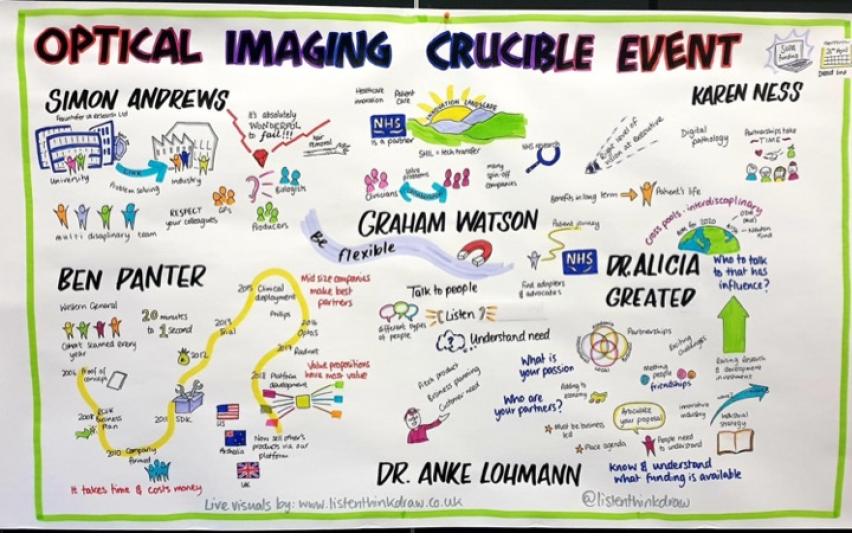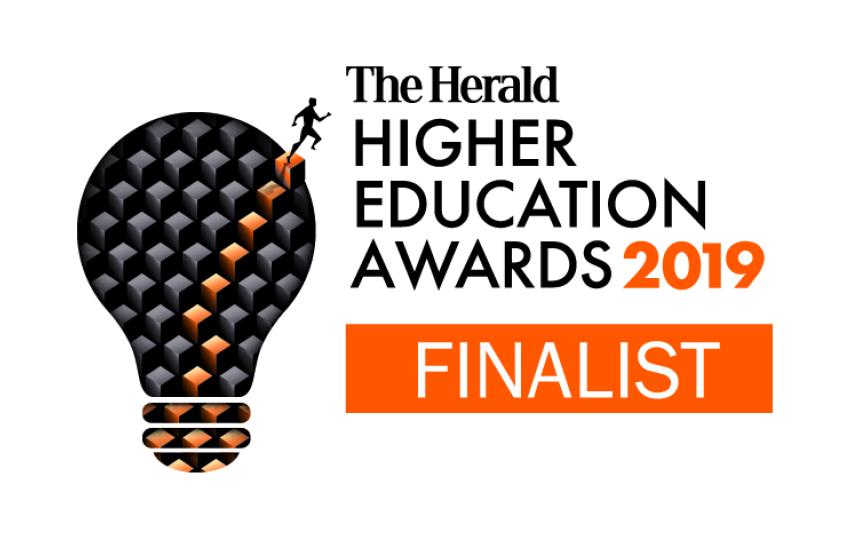Calling early/mid-career research leaders from life, physical, engineering, computational, mathematical, environmental and social sciences, arts and humanities in Scotland and Europe!
Scottish Research Pools, the University of Luxembourg and other partner institutions have joined together to form European Crucible, an international research collaboration event gathering together Scottish future research leaders with their counterparts from across Europe.
[Update Feb 2024] The Crucible Podcasts are available, where you can hear more about some of the projects which were supported by the European Crucible.
The annual SUPA-Cormack meeting took place on the 9th of December 2019, at the RSE in Edinburgh. The meeting welcomed over 70 members of the SUPA Astronomy community, both student and staff, for a day of science and networking.
In a departure from previous years, the programme this year included two invited keynote talks. Dr Pamela Klaassen (UK Astronomy Technology Centre) gave an overview of the James Webb Space Telescope, and the role of Scotland in this mission, and Dr Sara Shinton (University of Edinburgh) led two sessions on Resilience and Wellbeing. Both talks served the desired purpose of promoting a sense of community. Dr Shinton’s talk led to extended discussions on the future role of the meeting, and of SUPA, in helping promote wellbeing within the Astronomy community in Scotland.
20 participants presented their posters in 1-minute flash talks, and seven participants gave longer twenty-minute talks. All SUPA Astronomy institutions were represented in the talks and posters: Edinburgh, Dundee, Glasgow, St Andrews and Strathclyde.
In October we welcomed nearly 90 of our latest cohort of PhD students from across our member institutions. Meeting at the Technology & Innovation Centre at the University of Strathclyde, the day introduced the group to the SUPA research themes and the fantastic research within them, had a research highlight talk from Daniele Faccio (Glasgow) on his ground-breaking research into quantum and computational imaging, heard from final year student Araceli Venegas-Gomez (Strathclyde) on her career journey and how to get the most from your PhD, and a talk from Stuart Reid (Strathclyde) on the benefits of public engagement. There was also a quiz (some trivia, some important information about SUPA processes!), and a 'mystery box' activity where the students learnt about undertaking collaborative research, communication and got to know one another.
The joint 75th SUSSP and 20th STFC Summer School in Nuclear Physics and its Applications was held at St Andrews University, 5th-17th of August, organised by Daria Sokhan (Glasgow) and Alessandro Pastore (York). It followed the International Nuclear Physics Conference which ran in Glasgow and we are delighted to report that it was a great success, with the largest number of attendees to date: 59 students, out of which 46 were from the nine UK nuclear physics groups (33 of them STFC-funded) and 13 came from institutions outside of the UK: Armenia, Germany, India, Italy, Poland/Russia, Slovenia, South Africa and Switzerland.
The 27th International Nuclear Physics Conference (INPC 2019) was held in Glasgow this summer (29 July to 2 August). Held every three years,
INPC is the biggest conference in the world for fundamental nuclear physics, and is overseen by the International Union of Pure and Applied
Physics (IUPAP). This was the first time it had been held in Scotland, with previous conferences having been in locations such as Adelaide, Florence and Vancouver.
Over 650 delegates from 32 countries were welcomed by Baillie John Kane, representing Glasgow's Lord Provost, and to Scotland by Ivan McKee MSP, representing the Scottish government. The programme covered the very latest work across the whole range of topic areas in Nuclear Physics, from the study of hadrons to the heaviest nuclei, and the role of nuclear physics in our understanding of the universe. The importance of applications of nuclear science was also highlighted. In addition to the SUPA-sponsored public lecture, an outreach programme was put together by teams from Glasgow and York, featuring amongst other things a chart of nuclides built from lego.
The SUPA Welcome Event 2019 - 17 October 2019
17 October 2019, Technology & Innovation Centre, University of Strathclyde.
The Welcome Event is a chance for new students to meet fellow new students, hear about what SUPA is and what we do for our students through the Graduate School, hear about the research highlights across our seven themes, hear from current PhD students, and discover the benefits and opportunities of public engagement.
The International Nuclear Physics Conference is coming to Glasgow at the end of July, SUPA is sponsoring the public lecture given by University of Surrey's Professor Jim Al-Khalili, and everyone is invited!
Nuclear Physics and the Making of the Modern Periodic Table
Tuesday 30 July 2019
SEC, Glasgow
Nothing epitomises the field of chemistry more than the periodic table of elements, a classification and ordering of all the different types of atoms in existence on a grid that can be found on the walls of every school chemistry laboratory in the world. And yet, for more than half of the 150 years since the periodic table was first proposed by the Russian chemist Dmitri Mendeleev in 1869, it has been nuclear physicists, not chemists, who have been adding elements to it. To date, in nuclear accelerator labs around the world, 26 transuranic elements have been discovered, the heaviest of which being element 118, named Oganesson.
Through this SFC-supported collaborative project involving SUPA, life sciences pool SULSA and medical imaging pool, SINAPSE, we are exploring ways to build on Scotland’s existing research and industry strengths in this important cross-disciplinary area. A range of activities are mapping current university and industry activities and trialling ways of supporting new collaborative activities across academia and industry.
SUPA was shortlisted for a 2019 Herald Higher Education Award, in the 'Innovative use of technology' category. The shortlisting recognises our video classroom network, enabling physics doctoral students from all over Scotland to learn from experts in any of the eight SUPA universities.
The award ceremony took place on 5 June 2019 in Glasgow. We lost out to the University of Edinburgh, but it was fantastic to be shortlisted alongside some excellent and innovative projects.
More information on the awards can be found on the event website.
